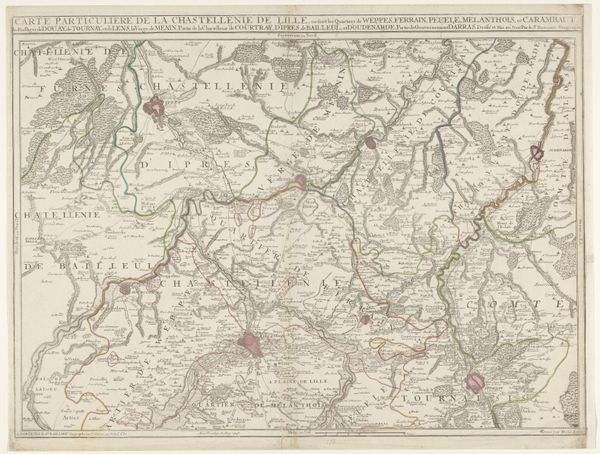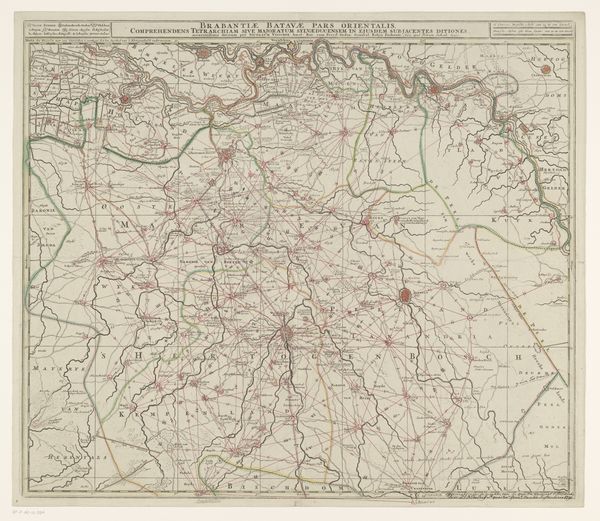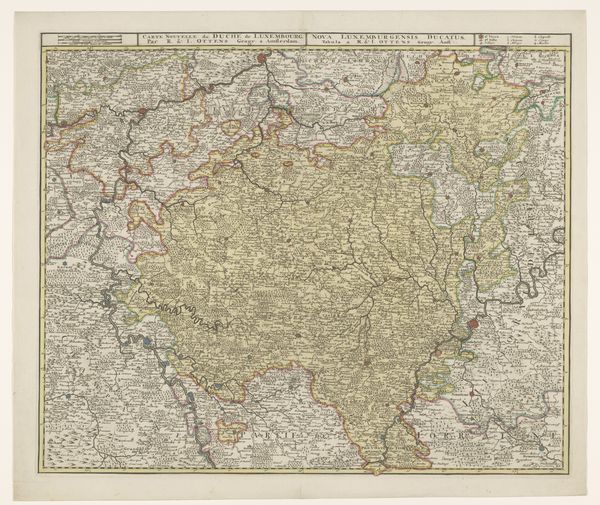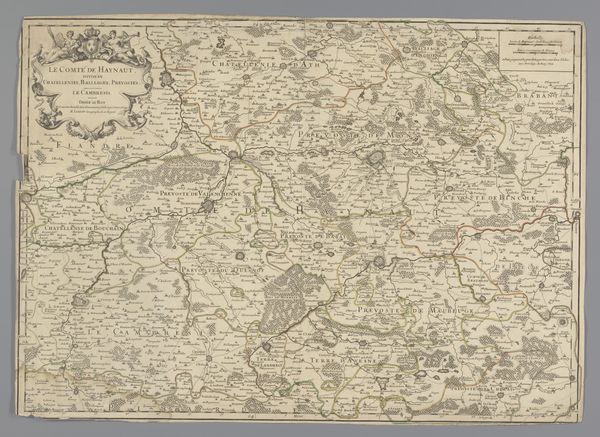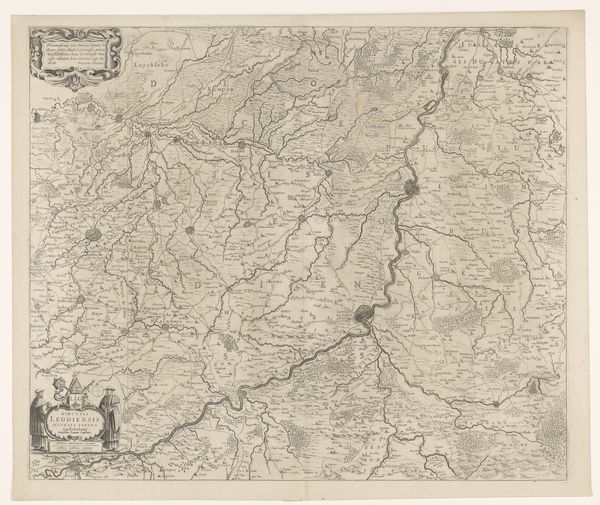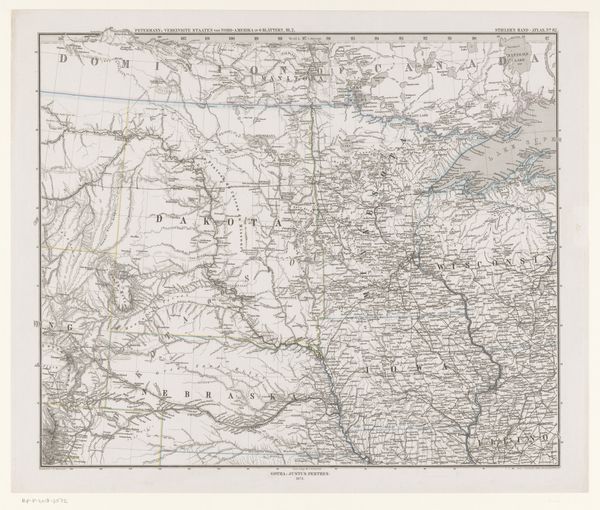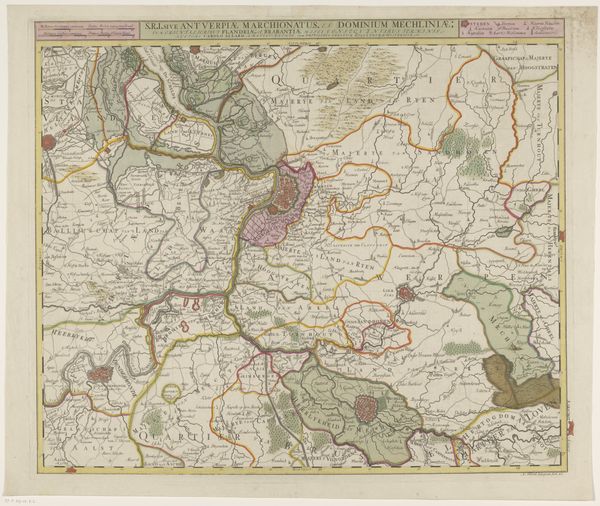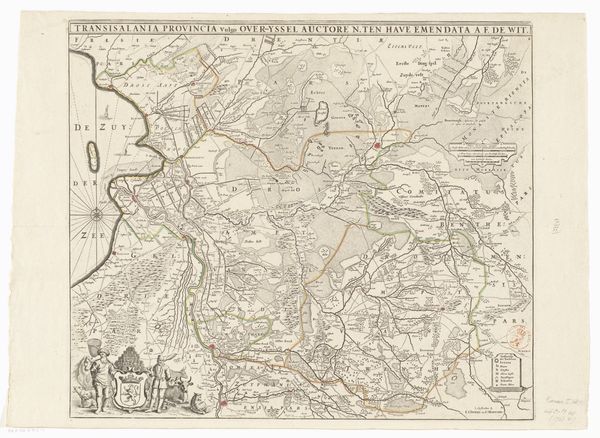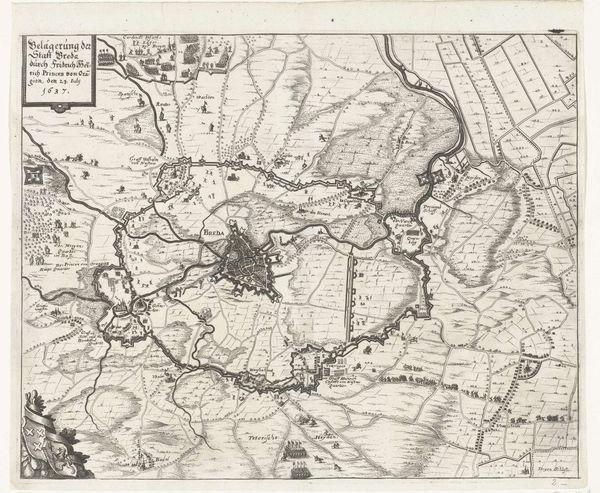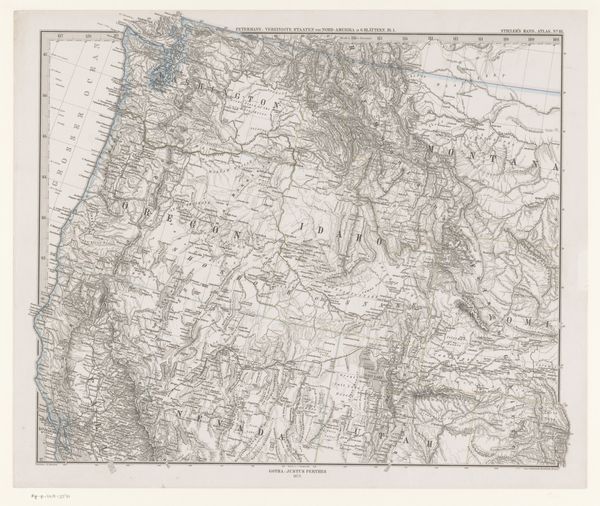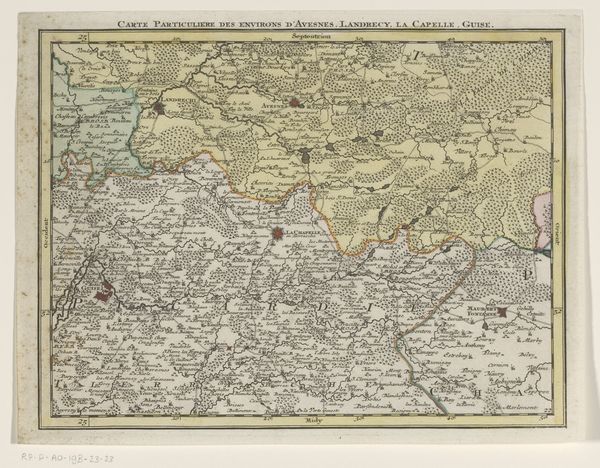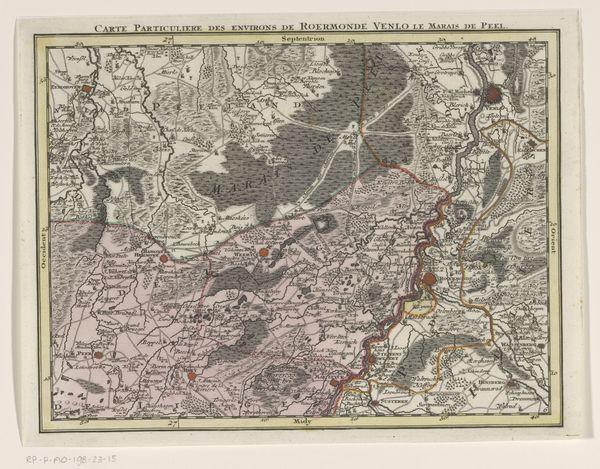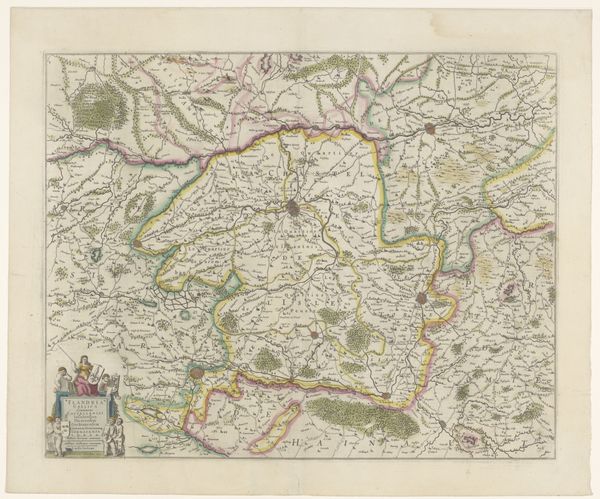
print, photography
# print
#
photography
#
geometric
#
cityscape
Dimensions: height 846 mm, width 1222 mm
Copyright: Rijks Museum: Open Domain
Editor: This print, "Kaart van Zwitserland", which I understand is a map of Switzerland dating from the 20th century, offers a dense, almost overwhelming amount of detail. The sheer volume of lines and names makes it hard to immediately grasp. What initially captures your attention when you look at this piece? Curator: The spirit of wayfaring leaps to my eye, that pre-digital questing we seem to be losing touch with. I'm instantly imagining this spread across a car bonnet, a family clustered round, planning adventures fuelled by petrol and the promise of lakeside picnics. Do you get a sense of the history imbued in the landscape, a palimpsest of human interaction and natural forces? Editor: I do now that you mention it! It's easy to see the layers, both of geographical information and historical context. Curator: Indeed. Think about the lines; they’re not just cartographical, they’re traces of human movement, aspirations etched onto the land. Then, look at the shades – the subtle variations hinting at altitude and terrain. Almost like whispers of wind and ancient glacial carvings. Editor: So, you see a romance, even poetry, in something as utilitarian as a road map. Curator: Precisely! Art exists in the intention of imbuing deeper meaning. How often do we forget to really *see* where we are, how we are connected to a place? Editor: That's a fantastic point. I definitely feel like I have a different perspective on it now – it's far more than just ink on paper. Curator: And I suspect our Swiss adventure starts not on the road, but in the map itself… perhaps over cheese fondue…
Comments
No comments
Be the first to comment and join the conversation on the ultimate creative platform.
